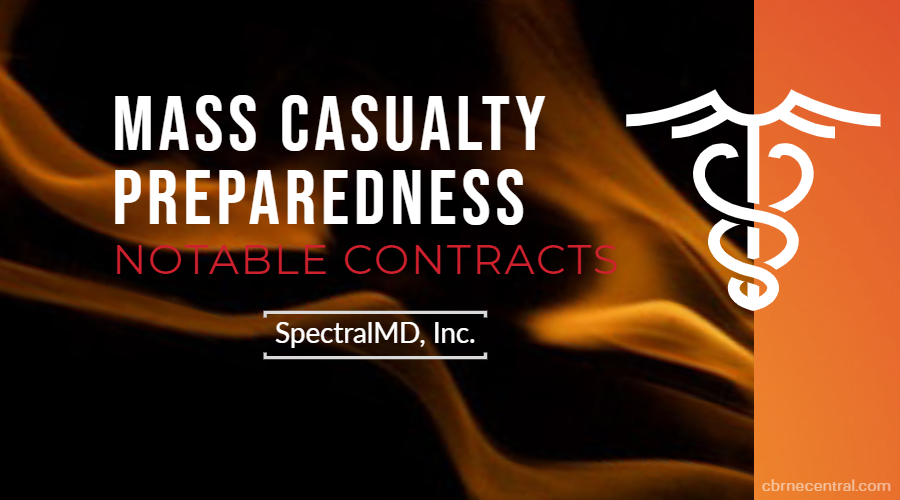Triaging and treating burns effectively in a mass casualty incident requires early clinical evaluations on the depth and severity of the injury.
A next-generation imaging device to evaluate the severity of burn injuries quickly and accurately will take the next steps in development under a contract by U.S. Department of Health and Human Services’ Office of the Assistant Secretary for Preparedness and Response (ASPR).
Under a 2-year, $27.3 million contract, SpectralMD, Inc., of Dallas, Texas, will advance the development of this next-generation burn imaging device, DeepView. The project is part of a long-standing effort by the Biomedical Advanced Research and Development Authority (BARDA), a component of ASPR, to develop new medical products that help save lives during a radiological or nuclear emergency.
Enhancing triage ability is particularly important in any type of mass casualty incident involving burns, including those resulting from a nuclear detonation.
“We want to give medical providers as many modern tools as we can to help them save lives in disasters. An emergency situation with many burn casualties could overwhelm surgical facilities and specialized burn care providers. They need fast, accurate assessments of burn injuries to provide effective medical treatment and to guide appropriate use of limited burn care resources immediately.”
BARDA Director Rick Bright, Ph.D.
BARDA’s extensive market research has shown that burn surgeons consider current wound imaging technologies to be cumbersome and not user-friendly. Instead of using devices, experienced burn surgeons visually evaluate burn wounds and use their experience to determine the wounds’ healing potential.
However, this visual, clinical assessment requires experienced surgeons to be available, and the U.S. does not have enough experienced burn surgeons to evaluate the large number of burn patients anticipated in a radiological or nuclear incident.
Under a prior BARDA contract, SpectralMD demonstrated the potential of the DeepView technology in clinical study at a single burn center. This preliminary work demonstrated the potential of the DeepView technology to detect the burn depth at least as accurately as experienced burn surgeons.
The company is using advanced Artificial Intelligence (AI) algorithms to train the device’s software to analyze wounds at pixel level to determine tissue damage severity, burn depth and other physiological information well beyond human capability.
Under the new agreement with BARDA, SpectralMD will conduct an expanded feasibility clinical trial across five burn centers to further develop a new easily portable hardware platform and the machine learning algorithm for faster processing and optimal performance. The contract can be extended for up to a total of 4 years and up to $91.1 million. If extended, the contract would support algorithm training and validation (pivotal) studies as needed to seek FDA 510k clearance.
The device is part of BARDA’s robust portfolio of development projects to treat mass casualties from chemical, biological, radiological or nuclear (CBRN) incidents. These advanced development projects include eight products to treat skin injuries from burns and radiation, as well as other treatments for thermal burns, blast injuries and acute radiation exposure, such as blood, gastrointestinal, and lung injuries.



